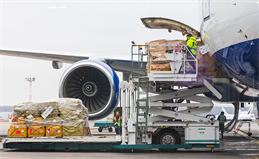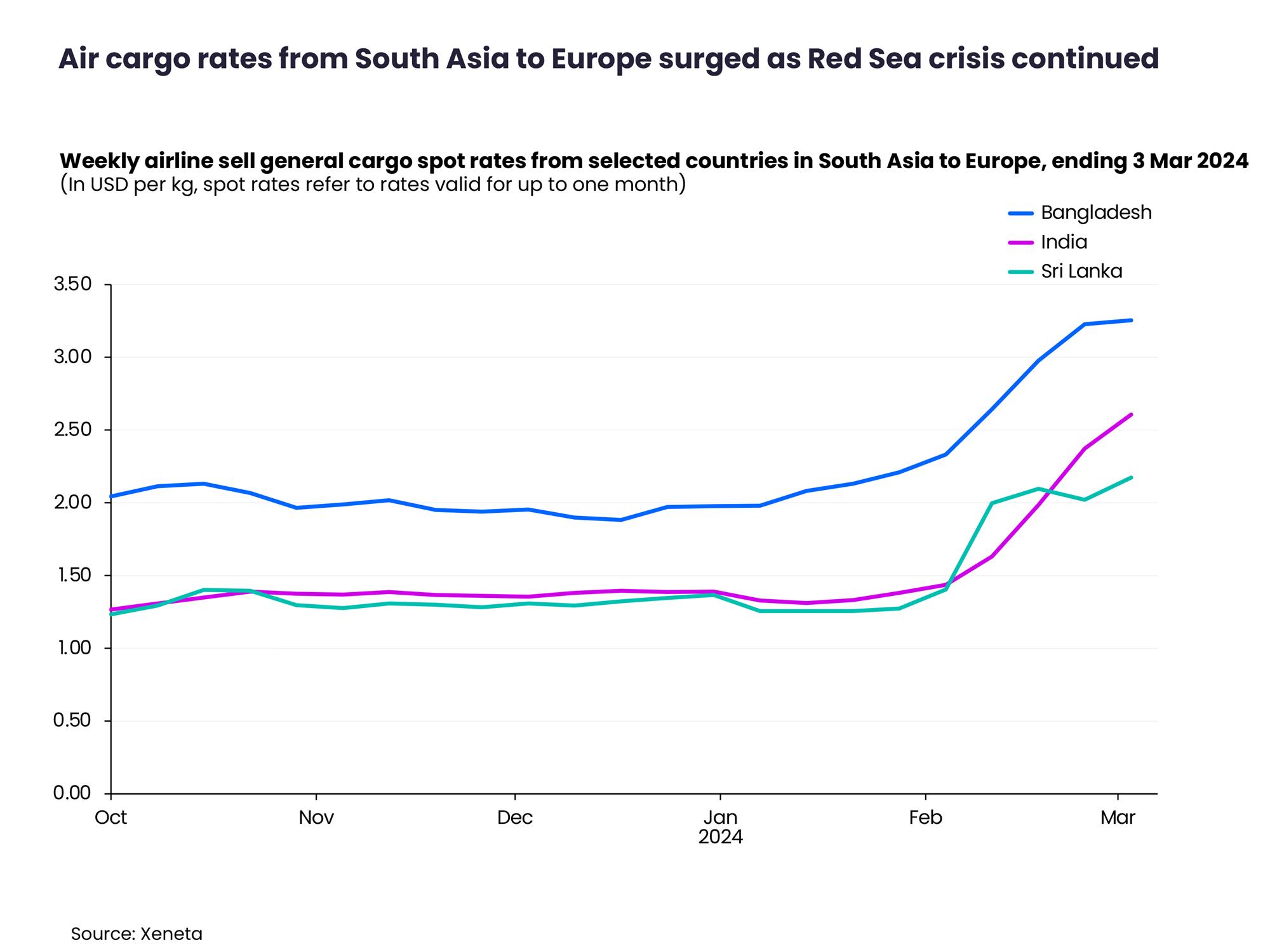
The global air cargo market's surprisingly positive start to 2024 continued in February, according to a new Xenata report, noting a second consecutive month of double-digit growth in demand and an uptick in general freight spot rates.
Following January's 11% growth in volumes, February saw a similarly welcome upward curve for airlines and freight forwarders, with demand increasing +11% year-over-year, based on the weekly market analysis of the ocean and freight benchmarking and market analytics platform.
"Reflecting this improvement, in what is traditionally a slower time of year for airfreight volumes, the average global cargo spot rate in February rose +2% from the previous month to US$2.29 per kg," the report said.
Xenata said this increase is unusual compared to pre-pandemic trends during the same periods, as it noted that traditionally, air cargo spot rates tend to decline following the year-end peak season in the previous year, and in the period immediately after the Lunar New Year, before rebounding towards the year-end holiday seasons this year.
"It's a surprising start to the year from a volume perspective and not something people would have expected, ourselves included, with demand much higher than it was a year ago," said Niall van de Wouw, chief airfreight officer at Xeneta.
"Generally, we wouldn’t expect to see a rate uptick at this time of year. This is likely related to the Red Sea disruption, but this is not the only factor."
"Signals suggest inflation is not cooling because consumers are still spending. It's not how much they are spending that's boosting airfreight; it's where they are spending," van de Wouw added.

The chief airfreight officer at Xeneta went on to note that trends indicate more consumers are buying on e-commerce platforms, and the intercontinental nature of these businesses, as well as the speed with which they are expected to deliver, is benefiting air cargo.
He said that for some airlines, e-commerce now makes up over 50% of their revenue ex-East Asia.
"We now wait to see what impact the airline's summer schedules will have as well as what happens next in the Red Sea," van de Wouw said.
"We would certainly expect to see a downward pressure again on rates once the summer belly capacity returns in the western hemisphere as well as China, where the travel recovery is by no means yet done," he added.
The growth in global air cargo traffic in February, measured in chargeable weight, rose +10% month-over-month, pushing the global dynamic load factor up by four percentage points to 60% in February, while global air cargo capacity remained relatively unchanged from the previous month.
Xeneta said its dynamic load factor analyses both volume and weight perspectives of cargo flown and capacity available.
"The increase in the average general cargo spot rate in February, as well as the upward trend in volume for the first two months of 2024, was most likely driven by the substantial growth in demand caused by the Red Sea disruption and e-commerce demand from China," the report added.
It noted that some operators even imposed short-term embargoes on import traffic ex Asia during February to help clear backlogs caused by the sudden surge in air cargo volumes as demand growth outpaced the growth of global cargo supply (+5% year-on-year) for the fourth consecutive month.
Consequently, the year-on-year decline of the global air cargo spot rate reached its lowest level since October 2022 in February at -14%.
It said that the ongoing conflict in the Red Sea continues to impact ocean container shipping, producing a positive spillover modal shift in favour of air cargo.

Recent declines in ocean container spot rates were also impacted by a drop in ocean schedule reliability for Asia-to-Europe trades, which was recorded at 39.4% in January, the lowest level since October 2022, according to Sea Intelligence.
"This has further contributed to the strong increase in air cargo demand on this corridor for shippers willing and able to bear the higher cost of airfreight to maintain the resilience of their supply chains," Xeneta said.
Rise of cross-border e-commerce
As the rise of cross-border e-commerce continues to drive demand for air cargo, particularly from Guangzhou and Hong Kong, market intelligence indicates some shippers transiting these locations are now considering and starting to use alternative hubs to circumvent capacity constraints caused by the e-commerce boom, Xeneta said.
"Our conversations with shippers suggest many are looking to derisk their supply chains by avoiding hubs which are now so dominated by e-commerce behemoths," van de Wouw said.
"This comes down to simple math for shippers. If you're a clothing retailer, with spring on the way in Europe, you want your seasonal products in-store for the peak demand period. If they're stuck in a sea container because of longer lead times, and you miss this opportunity, the subsequent markdown in the product cost is likely greater than the cost of switching from sea to airfreight. This is shaping the market — but we also know the market will probably surprise us again in the coming weeks," the chief airfreight officer at Xeneta added.
Compared to the previous corridors referenced, the report said Europe to US air cargo spot rates saw the smallest month-over-month growth of +5% to US$2.05 per kg in February.
Airlines, forwarders, and shippers will now be closely monitoring market trends as airlines prepare to launch their summer schedules at the end of March.
Xeneta said this would specifically impact the transatlantic air cargo market, which traditionally sees a capacity increase of about +50% due to increased belly capacity during the peak summer months for passenger travel.
As in previous years, this change is expected to put downward pressure on air cargo rates on Europe-North America corridors, as well as air cargo flows that use European hubs as transit points, such as those in the Indian subcontinent and Southeast Asia markets to North America.



